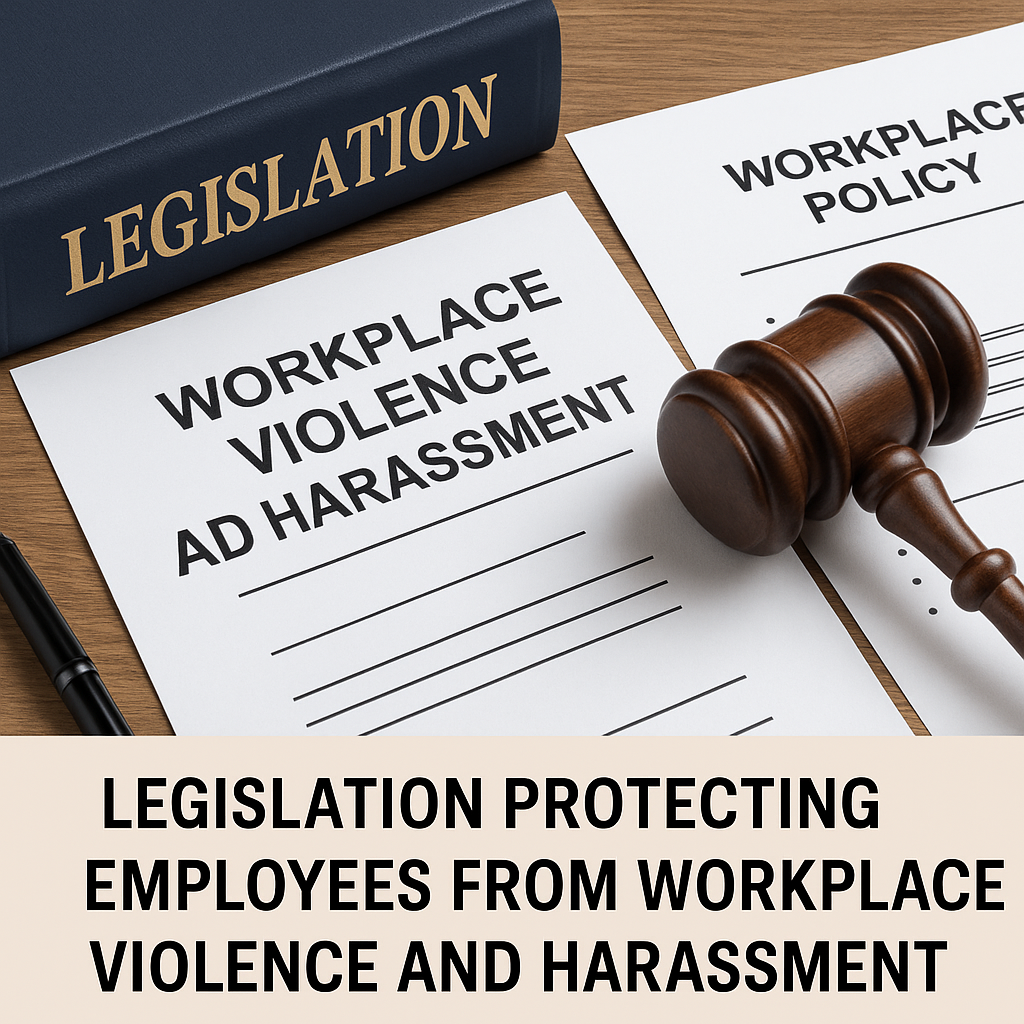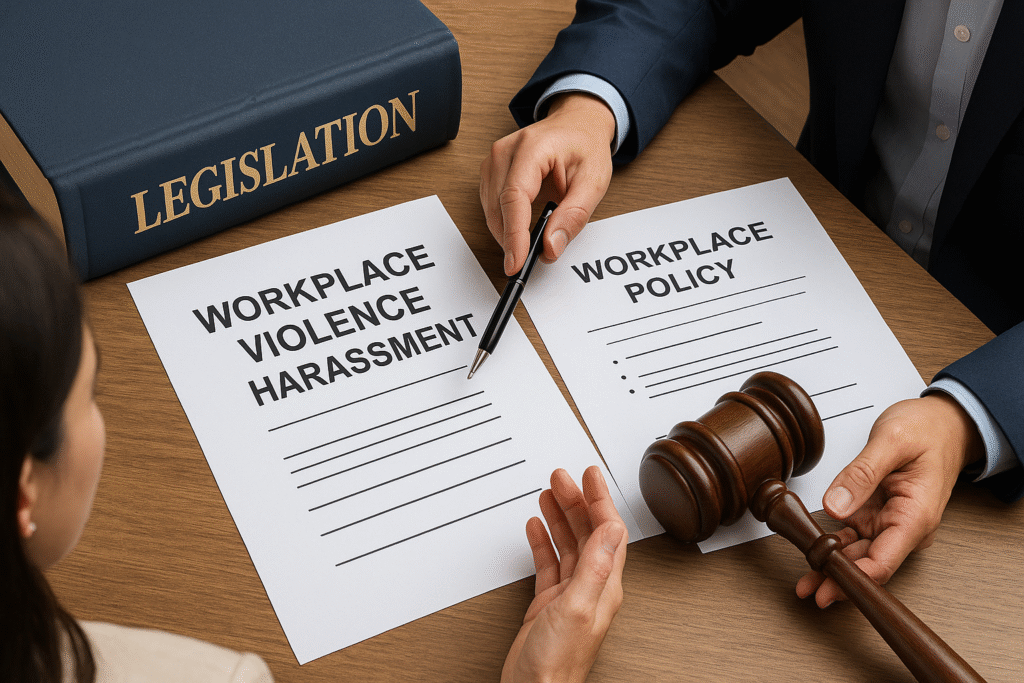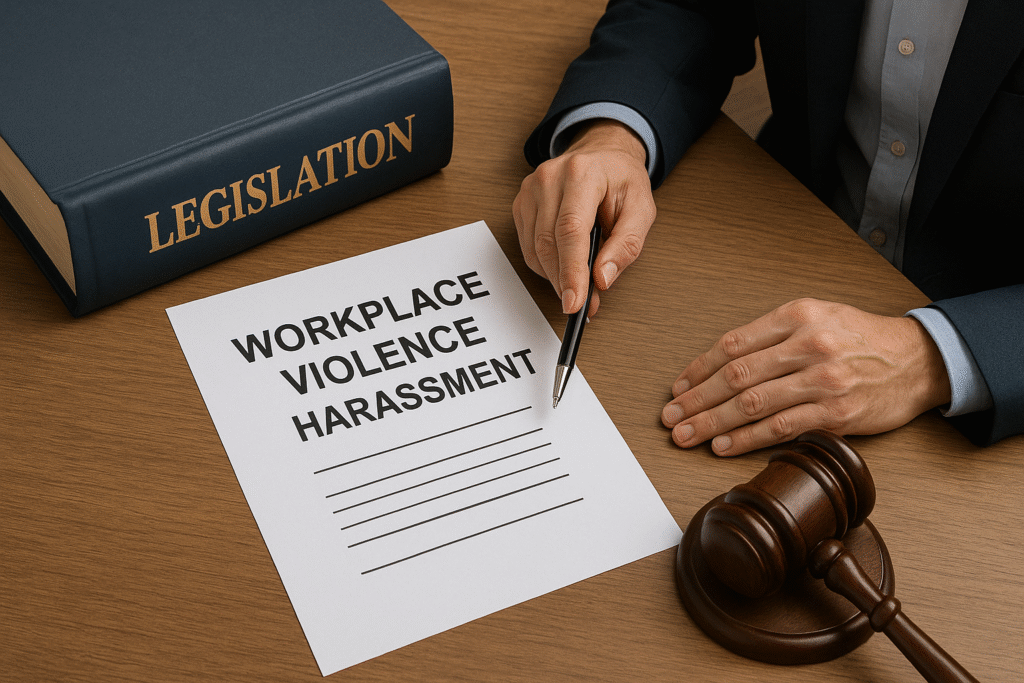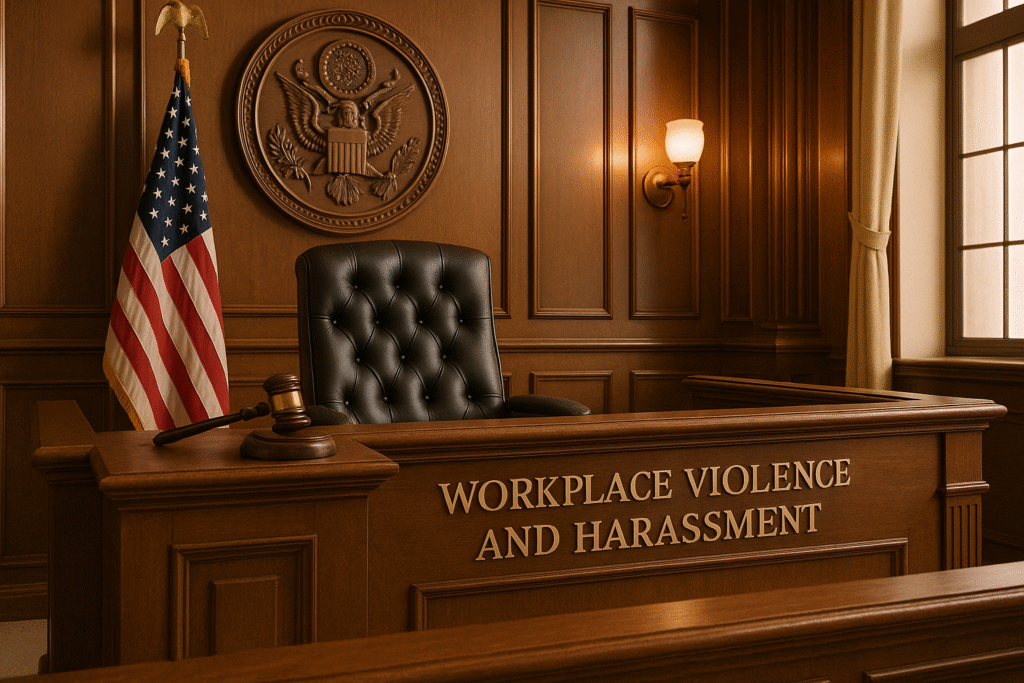Legislation protecting employees from workplace violence and harassment is one of the most significant advancements in occupational health and safety.
These laws ensure that every worker, regardless of their role or industry, has the right to work in an environment free from fear, intimidation, bullying, or physical harm.

By embedding protections into law, governments send a clear message: workplace violence and harassment are not just organizational issues but public safety concerns.
Understanding Workplace Violence and Harassment
Workplace violence and harassment extend beyond physical aggression. It includes psychological harm, verbal abuse, threats, sexual harassment, and behaviors that create a hostile environment.
Recognizing the broad scope of harm is critical because employees often suffer silently when only physical acts are acknowledged.
By including legislation protecting employees from workplace violence and harassment, lawmakers ensure that both overt acts like assault and subtle forms like intimidation are addressed.
Key Features of Legislation Protecting Employees
The strength of these laws lies in their clarity and enforceability.

Core features include:
- Employer Duties – Employers are legally required to establish violence and harassment prevention policies, risk assessments, and reporting systems.
- Worker Rights – Employees have the right to refuse unsafe work, report harassment without retaliation, and receive training on how to respond.
- Investigation Procedures – Legislation requires employers to investigate complaints promptly, thoroughly, and fairly.
- Support Systems – Laws encourage access to counseling, mediation, and employee assistance programs.
- Penalties for Non-Compliance – Organizations that fail to comply may face fines, legal action, or reputational damage.
Examples of Legislative Frameworks
Canada
In Canada, Bill C-65 amended the Canada Labour Code to strengthen protections. It requires federally regulated employers to prevent, respond to, and offer support in cases of workplace violence and harassment.
Provinces such as Ontario also enacted specific regulations under the Occupational Health and Safety Act that mandate harassment prevention programs.
United States
In the U.S., while there is no single federal law that comprehensively covers workplace harassment outside discrimination categories, agencies like OSHA provide guidance under the General Duty Clause.
Sexual harassment is explicitly covered under Title VII of the Civil Rights Act. States like California have stronger statutes requiring training and proactive measures.
International Perspectives
Globally, the International Labour Organization (ILO) Convention 190 sets a binding standard recognizing the right of everyone to a world of work free from violence and harassment.
Countries adopting this convention must align their laws with these principles.
Why Legislation Matters
Without legislation, efforts to combat harassment and violence depend solely on company culture, which varies widely.
By embedding rights and responsibilities in law, governments create consistency, accountability, and enforceable protections.

Such laws also shift the perception of workplace harassment from a “personal problem” to a societal issue. For example, linking legislation with mental health initiatives reduces stigma and encourages reporting.
Practical Implications for Employers
Employers must integrate compliance into daily operations:
- Create Clear Policies – Written policies should define violence and harassment, outline reporting channels, and set disciplinary actions.
- Conduct Training – Employees and supervisors must be educated on recognizing and responding to inappropriate behaviors.
- Risk Assessment – Employers should regularly assess job roles that carry higher risks, such as healthcare, retail, or security.
- Foster a Culture of Respect – Beyond compliance, leaders should model respectful communication and inclusivity.
- Maintain Records – Documentation of complaints, investigations, and outcomes ensures transparency and legal protection.
For a detailed employer resource, Canadian Centre for Occupational Health and Safety offers extensive guidance.
Linking to Organizational Policies
Internal policies must align with legislation. For example, companies can integrate anti-harassment measures into their workplace safety programs, employee handbooks, and onboarding training.
Connecting these elements builds a comprehensive protection system that safeguards employees while reinforcing compliance.
See also: OHSE.ca – Workplace Safety Articles for practical insights on policy integration.
Challenges in Enforcement
Despite strong laws, challenges remain:
- Underreporting – Employees often fear retaliation or disbelief.
- Cultural Barriers – In some workplaces, harassment is normalized as “part of the job.”
- Remote Work Complexities – Online harassment via emails or chat platforms requires updated responses.
- Resource Limitations – Smaller organizations may lack the capacity to conduct proper investigations.
Overcoming these challenges requires not only legislation but also cultural change and leadership commitment.
Final Thoughts
Legislation protecting employees from workplace violence and harassment is more than a legal requirement—it is a moral and social obligation.

Laws across jurisdictions provide a framework for prevention, response, and accountability, but their success depends on genuine commitment from employers and awareness among workers.
By building safer and more respectful workplaces, we not only comply with regulations but also empower employees to thrive. And in the end, stronger protections lead to healthier, more productive, and more resilient organizations.

No comments yet